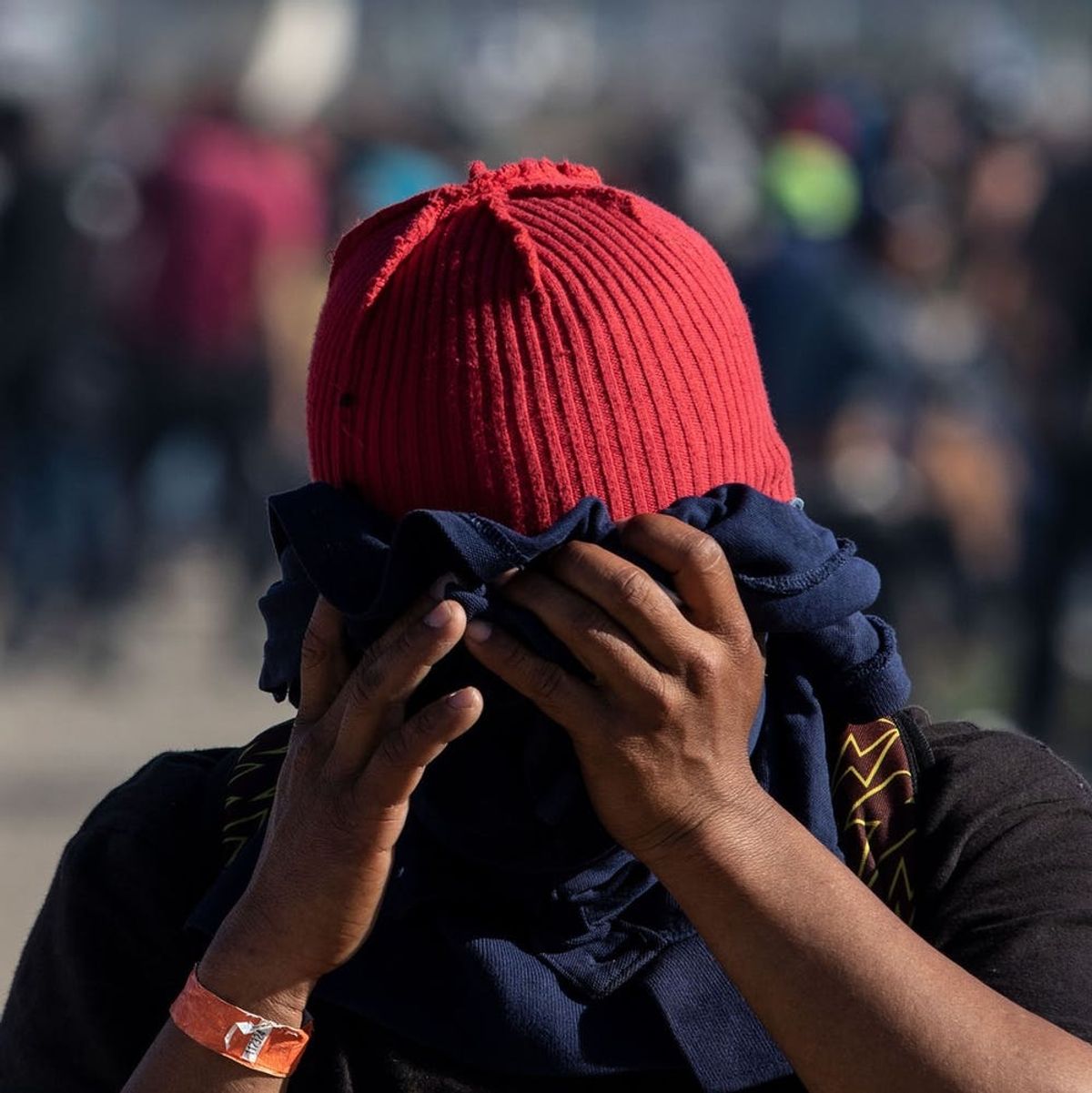Using chemical weapons on children only creates harm.
It’s Time to Face the Real Impact of Tear Gas Use on Migrant Children

On Sunday afternoon, hundreds of members of the Central American caravan of immigrants and asylum-seekers marched to the San Ysidro Port of Entry between Tijuana and San Diego to protest the dire conditions within their temporary detention shelter on the Mexican side of the border. As the mass of travelers — some of them with small children, who were pictured wearing diapers — approached the border, US Border Patrol agents fired rubber bullets and tear gas across the border and into the crowd.
As the horrifying images of the scene were broadcast on the news and social media, observers were immediately alarmed at the use of tear gas, particularly on children. Tear gas and all chemical weapons are banned for use in warfare under the Geneva Protocol, yet various governments (including in the US) permit police and other law enforcement to use tear gas for “crowd control” domestically. Law enforcement officers regularly use tear gas as a method of “crowd control” during protests (particularly leftist protests); protesters who participated in the Ferguson uprising were extensively attacked by tear gas, which called national attention once more to the harms of this weapon.
The impact that tear gas has on the human body can be painful, disorienting, panic-inducing, and potentially deadly.
Tear gas isn’t really a gas, though. It’s a powdered chemical that is stored in a metal canister that aerosolizes when activated. Once deployed, the chemical reacts to moisture; this is why tear gas is so incredibly painful when it comes into contact with the eyes, mouth, throat, and skin. When the powder hits, it causes intense stinging, burning, and irritation, which prompts the body to produce extra tears and mucous in order to flush the chemical out. Sven-Eric Jordt, associate professor of anesthesiology with the Duke University School of Medicine, told USA Today in 2014 that tear gas can make someone feel as if they are drowning. People frequently cough heavily after being tear-gassed as their body attempts to dispel the chemicals, and may vomit from the retching it induces.
While a person will want to run away from and escape the chemical attack, their eyes are also forced shut by the pain, which can make it difficult to get away from the tear gas and stop the exposure. And these are just the immediate, short-term impacts.
While tear gas is frequently referred to as a “less-lethal” or even “non-lethal” weapon, scientificstudies dispute that tear gas is not potentially deadly and argue that it can and does cause permanent, long-term health problems, and even miscarriages.

Tear gas can be especially harmful to people with existing medical conditions that would make their bodies even more vulnerable to damage from such an attack. According to a 2016 study published in the Annals of the New York Academy of Sciences, “Case studies and recent epidemiological studies revealed that tear gas agents can cause lung, cutaneous, and ocular injuries, with individuals affected by chronic morbidities at high risk for complications.” The same study notes that two different chemicals commonly used to create tear gas, TRPV1 and TRPA1, “localize to pain‐sensing peripheral sensory neurons and have been linked to acute and chronic pain, cough, asthma, lung injury, dermatitis, itch, and neurodegeneration.”
While tear gas will harm anyone, children are highly vulnerable to the effects of tear gas merely because they are small. Dr. Alan J. Shapiro, a pediatrician who co-founded Terra Firma, an organization in New York City that provides medical and legal services to immigrant and asylum-seeking youth, tells Brit + Co that “toxic gases in general are heavier than air; they sink closer to the ground, and because children are so low to the ground, they’re more vulnerable. Just by physics alone, they’re more exposed.”
Shapiro adds, “Small children have a higher body surface area to mass ratio, [so] there’s more surface area that can absorb chemicals. Their skin is more permeable, they have higher metabolic rates and higher respiratory rates. They’re going to be breathing that much faster, and get that much more exposure.”
And yes, tear gas has the potential to cause deadly complications, Shapiro says. “Imagine you have a child who is vomiting and maybe beginning to choke, they could die because they’re choking on their own vomit,” he tells us. He adds that tear gas can also cause laryngeal spasms (a swelling of the vocal chords that can make it difficult to breathe), bronchial spasms (a constriction of bronchial muscles that makes the chest feel tight and can also make it hard to breathe), and pulmonary edema (when sacs in the lungs fill with liquid, again causing breathing difficulties). All of these conditions are potentially fatal, especially if someone has asthma or other conditions.
Further, a 2017 study that reviewed 31 studies from 11 different countries on the impacts of tear gas when used as a method of “crowd control” found that of 5,131 people injured by tear gas, two died and 58 sustained permanent disabilities. Of 9,261 total injuries due to tear gas suffered in “crowd control” settings, 231 were due to injuries from projectiles.
Tear gas is, unfortunately, a staple of police intervention during protests. Because injury and the deployment of tear gas is common, volunteer “street medic” organizations often attend protests so they can be of immediate assistance in case someone is hurt. Street medic training typically involves learning how to treat protesters for tear gas attacks.
Minku Sharma, a street medic with Chicago Action Medical, a Chicago street medic organization, tells Brit + Co that he’s been trained to “get the patient away from the scene and ideally upwind of the tear gas” so that he can help calm the patient down and help to ease their eye pain by immediately flushing their eyes with water.
He adds that “calming and providing reassurance are really important” while someone is suffering from tear gas, “because being attacked by police is not only physically painful but emotionally traumatizing.” In a state of panic, patients may be likelier to sustain injuries they otherwise might not.
But few people who encounter tear gas will have access to a street medic’s reassurance. For immigrant children, the experience of being tear-gassed itself can compound the trauma already experienced from fleeing violence in their home country and seeking safety elsewhere.
“Children start off with the initial trauma of leaving their country — maybe they’ve seen a parent killed or have been attacked by gang members — so they have the trauma of leaving their community and family and friends behind,” says Shapiro. “Then they have to take a perilous journey where they suffer from hunger and exposure and get attacked by gangs along the way, and then show up at the border thinking it’s leading to safety and then they’re attacked by the US government.” All of these traumas can lead to PTSD, Shapiro explains, which can itself lead to further problems down the line.
Shapiro adds that medical services are not necessarily within reach of members of the caravan. “What worries me is the lack of treatment available,” he tells us. “They’re not in controlled areas with medical facilities nearby so, who’s going to irrigate their eyes and give them oxygen and treat their pulmonary edemas?” Absent this help, the US government only continues to heap on the risks to life and limb for vulnerable people, including kids, who need safe homes.
What do you think? Tell us on Twitter @BritandCo.
(Photo by Guillermo Arias/Getty Images)











